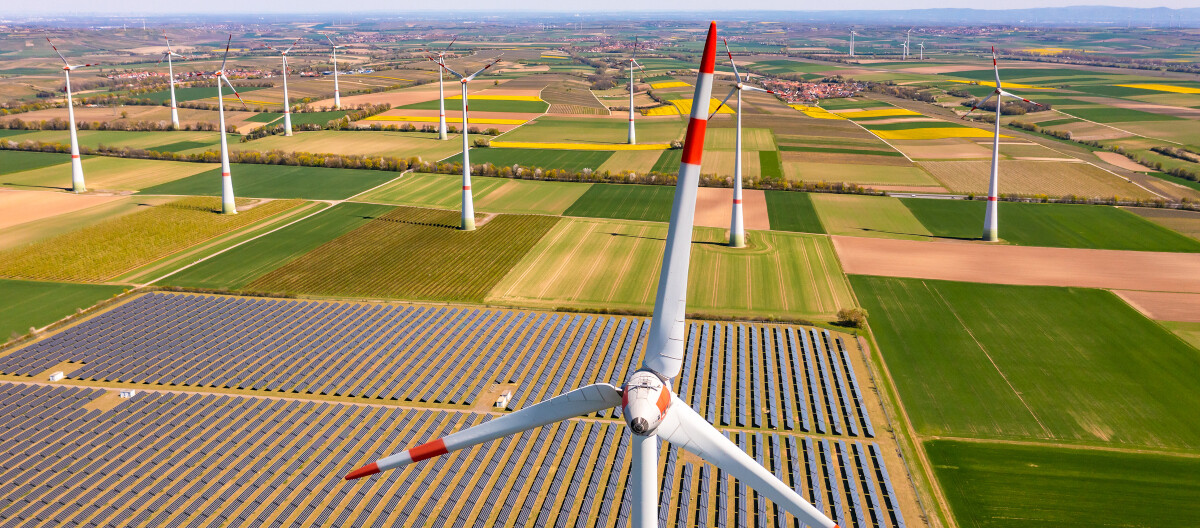The energy transition and the UK’s net zero strategy
The UK has long been dependent on fossil fuels, particularly imported fuel and gas. However, the COVID-19 pandemic and the Russian invasion of Ukraine increased energy prices to an unprecedented level, resulting in soaring energy bills for both households and businesses. The UK government’s Powering Up Britain policy paper outlines a plan to deliver “among the cheapest wholesale energy prices in Europe by 2035”, while aiming to hit the UK’s net zero target by 2050.
Renewable energy generation in the UK is at a record high, with 51.5% of electricity now coming from renewable sources, while the cost of renewable electricity generators is falling. The government is focusing on renewables through investing in the green economy and providing financial incentives to develop offshore wind farms and floating turbines. While renewables will not be the UK’s only provider of energy, they will play a major part in the energy mix.
It’s anticipated that the UK’s renewable capacity will increase dramatically over the coming years. There are plans to increase offshore wind’s output to 50 gigawatts (GW) by 2030, aided by £200 million of government funding and financial incentives. Solar capacity is forecast to grow to roughly 70 GW in the same period. Combined with other low-carbon electricity sources, such as nuclear (14.2% in 2023), the UK appears capable of hitting the government’s 2035 target and reaching net zero in the specified timeframe.
Renewable energy is cheaper, so why are prices still high?
Research has shown that an electricity system dominated by renewables has the potential to be more cost-effective than one based on fossil fuels. Not only is electrical energy from renewables cheaper but, by limiting dependency on gas, overall costs can be reduced.
Why, then, have electricity prices for consumers and businesses remained high? The answer lies in the way the UK’s energy system works. Despite investing in renewable energy, the country still relies on fossil fuels to generate electricity, so the price paid for wholesale electricity on the “spot market” is primarily determined by the price of natural gas. Since renewable and nuclear generation is not yet enough to meet total demand, gas still provides two-fifths of electricity generation in the UK.
The UK's energy system operates on the marginal cost principle. This means it uses the most expensive energy to set the price for all types of energy, including renewables. Since gas prices have increased, so has the price of renewable energy.
Electricity price volatility: what is it and why does it happen?
Electricity price volatility (EPV) refers to the short-term fluctuation in the price of electricity as a commodity. These sudden, unpredictable changes in price can have a significant impact on consumers, businesses and the economy as a whole.
Since electricity has historically needed to be consumed as it is generated, it is highly dependent on several factors: changes in fuel prices, renewable energy output variability, geopolitical events, regulatory changes and market demand fluctuations caused by weather conditions. In the past few years, a combination of these factors has contributed to higher energy prices, notably the Russia-Ukraine conflict, the Nord Stream 1 pipeline closure and low reserves of gas storage both in the UK and in Europe.
While the government has introduced an energy price cap for households, this does not affect business tariffs, which have increased significantly. Businesses have been further hit by the discontinuation of the Energy Bills Discount Scheme, which ceased to operate in April 2024.
The switch to renewables: how businesses can control costs
While renewables are essential to hit the UK’s net zero target, their integration into the grid poses challenges. Growing adoption of solar energy can lead to a phenomenon known as price cannibalisation, where the market price of electricity drops significantly during periods of high solar output. This means that returns diminish when supply of solar energy outstrips demand.
Installing solar panels is no longer a guarantee of reduced energy costs: the impact of price volatility means that solutions for the continuous availability of solar power, such as solar battery storage, need to be considered, as well as the introduction of smart energy management systems to manage demand. Investing in an energy storage solution means businesses can store excess energy during low-price periods and use it during peak demand as a way of significantly reducing the impact of price volatility. Companies must take into account the integration of storage solutions to ensure that their investment in renewables is viable and contributes positively to the energy portfolio.
